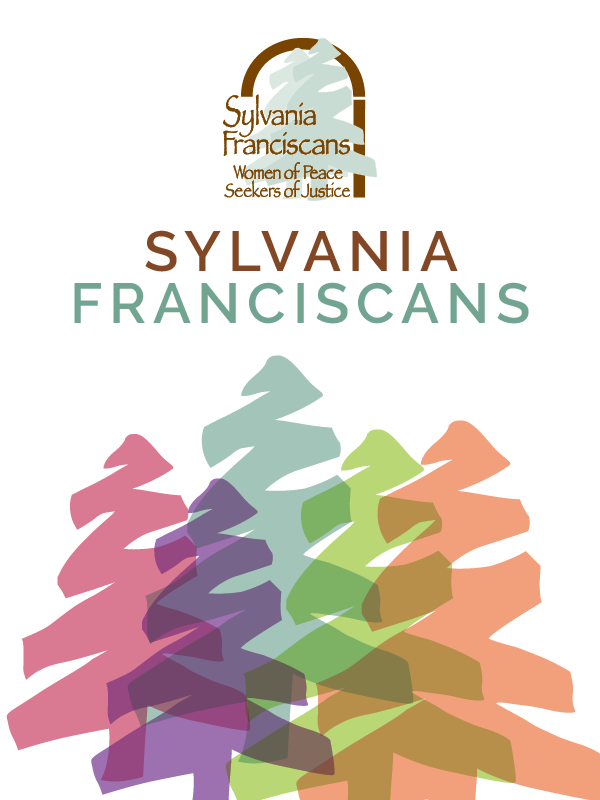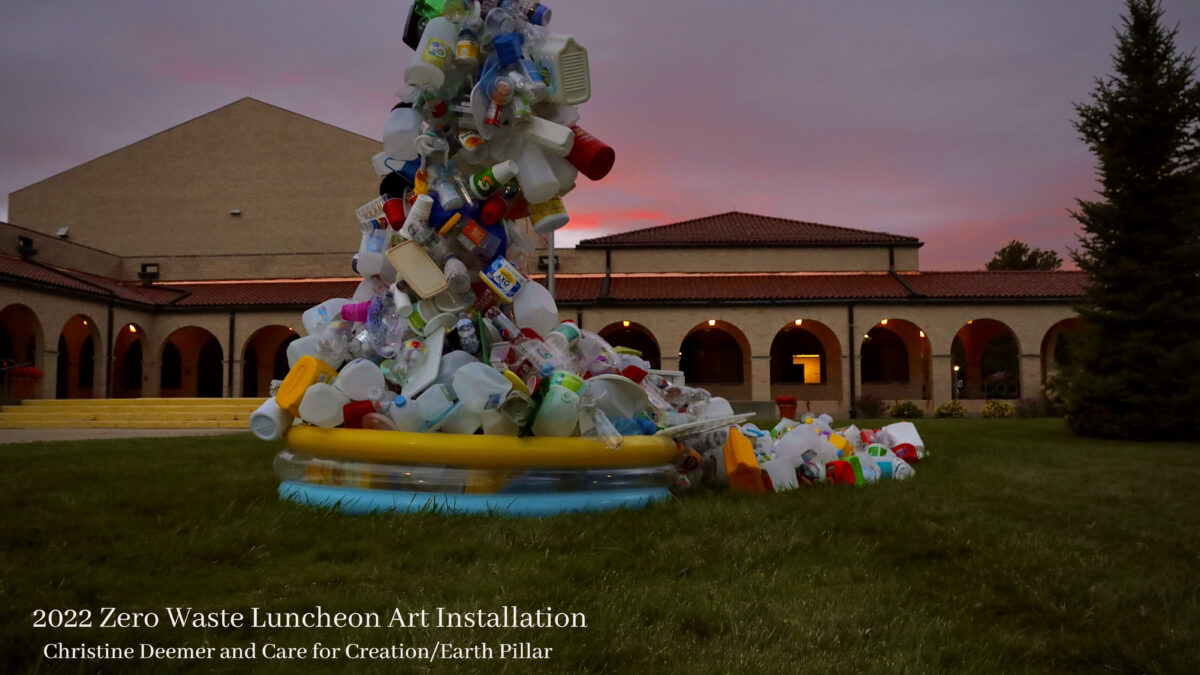
Be Kind – It Costs Nothing
August 29, 2024
Love in Action
September 10, 2024by Sara Grunberg
September 4
Where the Plastic Ends:
This year marks the 12th annual Zero Waste Luncheon, hosted by the Love of Creation/Care for the Earth pillar and sponsored by the Sisters of St. Francis of Sylvania, Ohio. Each year, the Zero Waste Luncheon serves as a campus-wide opportunity to promote and raise awareness about sustainable practices and topics. It encourages participants to critically evaluate what is truly needed for a successful event while prioritizing sustainability. By collecting materials that are reusable, borrowed, compostable, or recyclable, the event relies on the community to contribute items, ensuring that no waste is produced. To deliver a thought-provoking message, the event features a theme that encourages participants to deepen their knowledge and explore environmental issues. The theme for this year’s event is “Talking Trash,” focusing on debunking recycling myths and teaching correct recycling practices.
You might think, “I know how to recycle correctly,” but recycling rules are constantly evolving, so there’s always something new to learn! For example, did you know that glass can be recycled indefinitely, while plastic can only be recycled two to three times before it becomes unusable? Plastic recycling is often confusing, leading people to either recycle incorrectly or avoid it all together. That’s why this blog is dedicated to uncovering the facts and hard truths about plastics, and why recycling properly is essential.
Humans have passed through various historical eras named after the materials that defined them, such as the Stone Age, the Iron Age, and the Bronze Age. Today, we are in the Plastic Age. The commercialization of plastic dates back to World War II and has since become ubiquitous (Pilapitiya, 2024).
Globally, more than 359 million tons of plastic are produced annually, with the U.S. contributing 35 million tons of that total. In theory, many of the plastics we use could be recycled. However, only about 10% of all plastics ever produced have been recycled at least once, and a mere 1% have been recycled more than once.
Why is this a problem? Plastic is often defined as “a synthetic polymer developed by polymerization of monomers extracted from petrochemicals and combined with other chemicals” (Pilapitiya, 2024). In simpler terms, plastic is a material made from chemicals that can be molded into many different shapes, like bottles, bags, and toys. It’s popular because it’s cheap, strong, and easy to produce. However, the issue is that plastic doesn’t break down easily. As a result, it can accumulate and cause pollution in places like the ocean and landfills, harming animals, humans, and the environment.
Tiny plastic particles have been discovered everywhere—from the deepest part of the ocean, the Mariana Trench, to the summit of Mount Everest. Plastic can take hundreds of years to break down. Even when it does break down, it doesn’t decompose but instead fragments into tiny particles called microplastics, which are defined as plastic fragments smaller than 5 millimeters. As a result, plastic never truly disappears; it accumulates in soils, waterways, and various ecosystems. When microplastics are ingested by marine and wildlife, they can cause internal injuries. Additionally, these microplastics can accumulate in animals and potentially be passed to humans through the food chain. According to research from the Netherlands in 2022, microplastics were found in nearly 80% of participants’ blood (Semmouri).
Another harmful issue related to plastics is chemical leaching. Plastics are made from various chemicals that can seep into soil and water as the plastic breaks down, which can be harmful to both humans and wildlife. For example, when a plastic water bottle is left in a hot car, the heat can cause chemicals from the bottle to leach into the water you drink.
Since plastic can only be recycled two to three times, there is an ongoing need for new plastic production. Kristian Syberg, a researcher in plastic pollution at Roskilde University in Denmark, explains, “It’s more cost-effective to produce new plastic products than to collect and recycle or reuse existing ones. This is a systemic issue.”
In summary, there is a responsibility to upstand to recycle plastics properly so the cascading effects can be interrupted. Many plastics are not effectively recycled due to contamination, complex compositions, or limited recycling facilities. As a result, a significant amount of plastic waste ends up in landfills or the environment.
We have an opportunity to actively participate in recycling and raise awareness about it. Additionally, be mindful of your purchasing choices. Opt for materials that can be infinitely recycled, such as glass or aluminum, instead of plastic. By reducing our plastic consumption, we can decrease demand and its associated problems.
Therefore, this month’s “call to action” is to make thoughtful choices about the materials you purchase. For example, choose products in glass jars rather than plastic containers. Opt for alternatives to plastic whenever possible. Share your sustainable successes with Maegen Anders at manders@sistersosf.org. Additionally, you can learn more by attending this year’s Zero Waste Luncheon on September 30th at the Franciscan Center. This earth is not ours to inherit, but one we need to protect for future generations.
Ways to recycle plastic correctly:
- Lucas County is currently accepting 1-5 plastics
- Rinse all items before placing them in the recycling bin
- Screw caps and tops back onto their containers
- Plastic grocery bags should not be placed in your recycling bin. Instead, drop them off at designated collection locations for proper disposal
Sara Grunberg
 In the role of Sustainability Coordinator for Lourdes University and the Sylvania Franciscans, Sara Grunberg works as the common link between all campus ministries in achieving a sustainable campus. Sara was raised in the Franciscan tradition as a student at Sylvania Franciscan Academy, later graduating from Notre Dame Academy. At the University of Dayton, she earned a B.S. in Environmental biology, worked on a student-run farm, and learned beekeeping. From there, she attended the College of Charleston for a master’s degree in environmental and sustainability studies.
In the role of Sustainability Coordinator for Lourdes University and the Sylvania Franciscans, Sara Grunberg works as the common link between all campus ministries in achieving a sustainable campus. Sara was raised in the Franciscan tradition as a student at Sylvania Franciscan Academy, later graduating from Notre Dame Academy. At the University of Dayton, she earned a B.S. in Environmental biology, worked on a student-run farm, and learned beekeeping. From there, she attended the College of Charleston for a master’s degree in environmental and sustainability studies.







Make our own peanut butter, or make our own jar? Just kidding–great information as always!